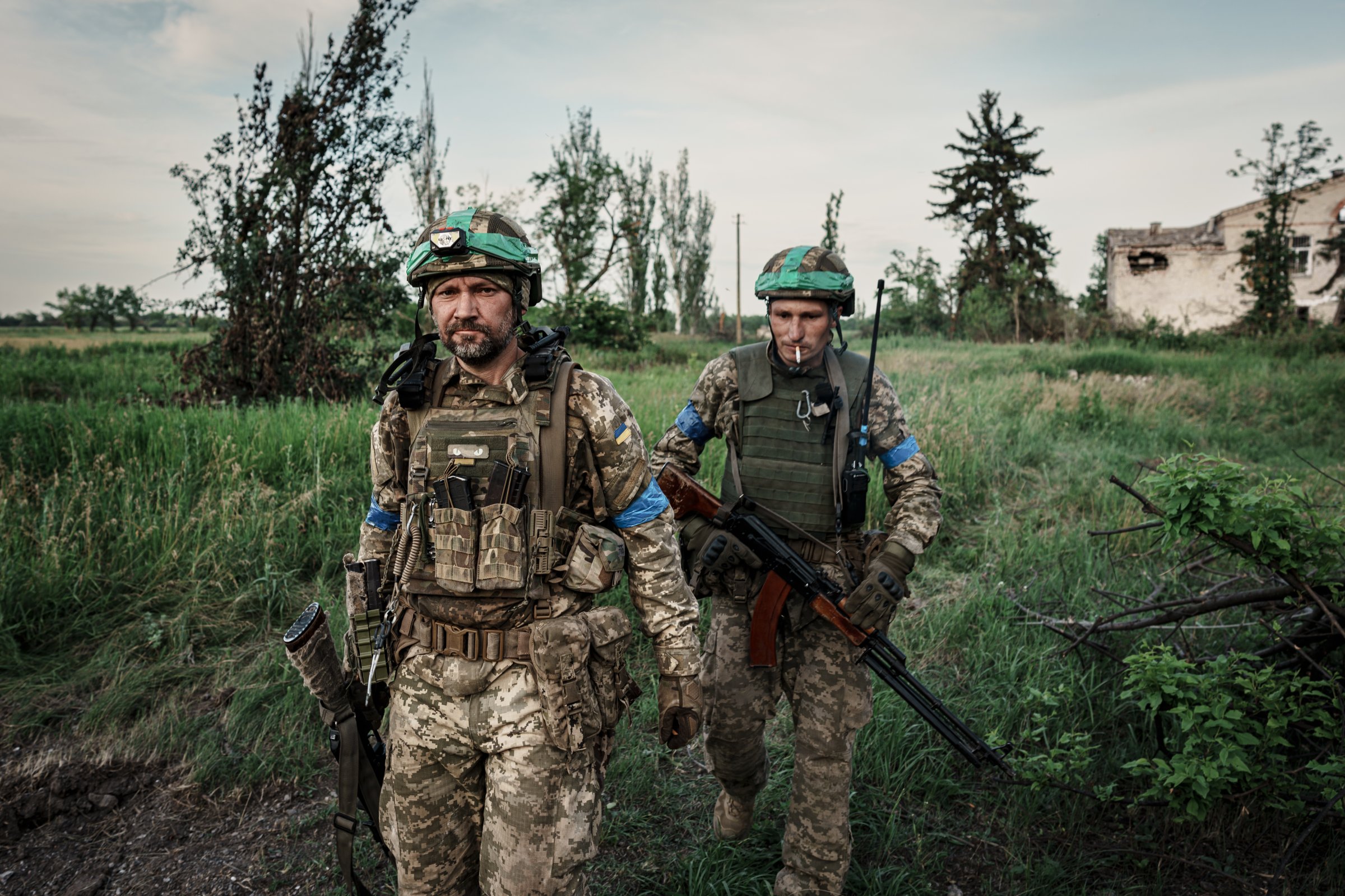
This week, Ukraine’s President Volodymyr Zelensky confirmed that Ukraine’s long awaited counteroffensive has begun. Ukrainians are trying to regain territory by attacking the Russian front lines and looking for weak points.
So far, Ukrainian forces have reported retaking several villages in the Donbas region. That includes Blahodatne, Makarivka, Neskuchne, and Storozhov in Donetsk province, as well as Lobkove, Levadne, and Novodrivka in Luhansk province. Fighting is also taking place in the southeast portion of the front in Zaporizhzhia, in the province of the same name.
“The Ukrainian forces are just probing Russian defenses right now. They are making gains but not decisive ones,” says Nicolò Fasola, a research fellow at the University of Bologna whose research focuses on Russia’s military strategies. “The breakthroughs that the Ukrainian forces have achieved are localized.”
To succeed, Ukraine will have to penetrate heavily fortified Russian defense lines and quickly redistribute their forces.
“Once they identify a possible breakthrough point, one of the key factors for success will be the ability to redeploy and concentrate their forces which are now spread across the entire line of attack,” Fasola says. “It’s going to come down to efficiency and numbers.”
In most battles, the defending army has a strategic advantage so going on the offensive is going to be costly for the Ukrainians. Since Ukraine’s last counteroffensive operation last fall, which saw the successful recapture of 7,500 square miles in Kharkiv region, Russia has had time to prepare and also introduced another round of conscription, though Moscow has said it will not be sending any new conscripts to Ukraine.
Experts tell TIME that one potential strategy Ukraine may be thinking about is trying to break the land bridge that connects mainland Russia to Crimea. This would be particularly advantageous to Ukraine because it would make it more difficult for Moscow to coordinate attacks with troops in Crimea. But the plan has been complicated because the destruction of the Kakhovka dam last week has limited Ukrainian forces’ ability to push forward in the south.
Russia has also erected heavy fortifications along the 600-mile front line, which the military analysts Seth G. Jones, Alexander Palmer, and Joseph S. Bermudez Jr. told the New York Times were “the most extensive defensive works in Europe since World War II.”
“We are stepping into unknown territory”
For Ukrainians, the task ahead will be arduous. Beyond the inherent difficulties of offensive warfare, as Russia discovered when it marched toward Kyiv last year, is Ukraine’s lack of airpower. “What is a major concern is that this the first major international military operation of this scale that has been done without much air support,” says Vald Mykhnenko, a professor of geography and political economy at Oxford University, who is also from Ukraine. “We are stepping into unknown territory as far as military strategy is concerned.”
Not having air support makes it difficult to know what weapons the Russians plan on using from their defenses. Additionally, mines planted by Russians may make it dangerous to push forward from the ground. “Even if you demine your field, they can remine it overnight again,” Mykhnenko says.
U.S. officials told the New York Times that the main thrust of the counteroffensive has yet to begin, citing the lack of large armored formations involved in attacks. That means that it remains too early to tell if the counteroffensive is succeeding.
But Mykhnenko says that so far the results have been encouraging. “I think if we compare the 100 square kilometers that the Ukrainian general staff said was liberated this week to the 600 square kilometers that Russia took over the course of six months, the results are pretty good,” he says, referring to his own estimates based on how far Russian troops advanced in the six months prior to the counteroffensive.
Whatever happens next, though, experts agree that Western weapons will be critical to Ukraine’s future. “Western resources are going to be key to the success of this counter offensive, but be aware that a lot of those resources are going to be destroyed,” Fasola says.
Ukraine has already lost armored vehicles, including the U.S.-supplied Bradleys, Defense Secretary Lloyd Austin said at a press conference on Thursday. But he cautioned that Russia is overestimating Ukrainian losses and that Ukraine continues to have “a lot of combat capability.”
Still, analysts tell TIME that even in the best case scenario for Ukraine, the country would be unlikely to recapture all of its territories in this counteroffensive attack.
“The pressure and the expectation levels on the Ukrainian troops is so high,” Mykhnenko says. “I just hope we slightly ease up on those expectations and not demand that they retake Mariupol one week and then Crimea the next. People should understand that this is going to take months and months, not a week or two.”
More Must-Reads from TIME
- Why Trump’s Message Worked on Latino Men
- What Trump’s Win Could Mean for Housing
- The 100 Must-Read Books of 2024
- Sleep Doctors Share the 1 Tip That’s Changed Their Lives
- Column: Let’s Bring Back Romance
- What It’s Like to Have Long COVID As a Kid
- FX’s Say Nothing Is the Must-Watch Political Thriller of 2024
- Merle Bombardieri Is Helping People Make the Baby Decision
Contact us at letters@time.com